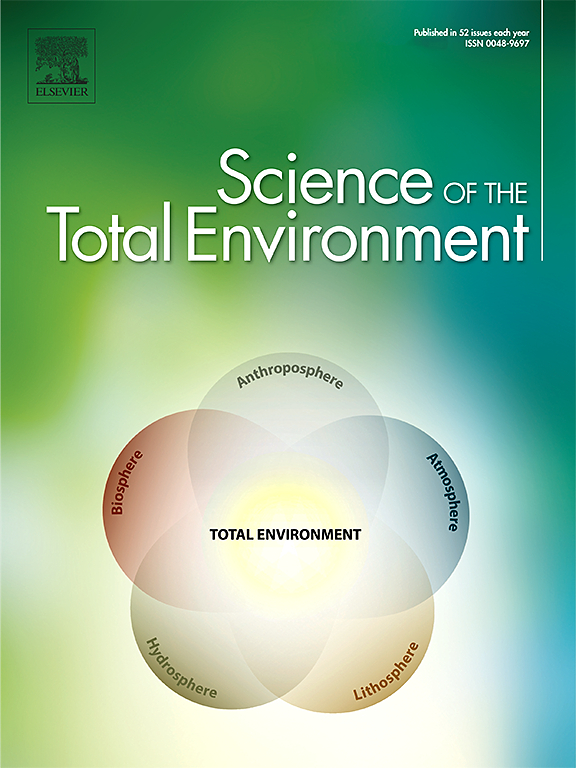Heavy metal accumulation and genotoxic effect of long-term wastewater irrigated peri-urban agricultural soils in semiarid climate
Oubane, Mohamed , Khadra, Ahmed , Ezzariai, Amine , Kouisni, Lamfeddal , Hafidi, Mohamed
2021-11-10 null null 794(卷), null(期), (null页)
Water scarcity is becoming an alarming issue in the Mediterranean countries. Therefore, using the treated wastewater in the irrigation is considered as a valuable option. However, uncontrolled and long-term irrigation by wastewater leads to human health and environmental damages, mainly related to some specific pollutants. The assessment of the availability and toxicity of the heavy metals after long term irrigation, under semi-arid climate, is not yet well documented. In this study, physicochemical properties, genotoxicity (Vicia faba micronucleus test), total and available (CaCl2-extractable) concentrations of Cr, Pb, Cu, Zn, Co and Cd in eight soils of peri-urban farms irrigated with wastewater were examined to evaluate their accumulation. The results indicated that long-term irrigation with wastewater induced significant increase of electrical conductivity, organic matter, calcium carbonate equivalent and nutrient availability. Total and available concentration of heavy metals were significantly higher (P < 0.05) in irrigated soils by wastewater. The total concentrations of Zn, Pb, Cu, Cr, Cd and Co in irrigated soils by wastewater at 0-40 cm depth were 85.69, 43.94, 34.86, 14.62, 9.94 and 7.17 mg kg(-1), respectively. Furthermore, the increase of the available metal fraction in irrigated soils by wastewater at 0-40 cm depth followed the following order: Co (1270.1%) > Cd (914.5%) > Cu (881.5%) > Cr (471.2%) > Pb (230.8%) > Zn (223.8%). The micronucleus assay indicated significant increase of micronucleus frequencies (41.25 parts per thousand, 35.48 parts per thousand, 21.66 parts per thousand, 16.23 parts per thousand and 13.62 parts per thousand respectively for P1, P2, P3, P4 and P7) which were higher than the negative control (0 parts per thousand) and the irrigated soil by fresh water (3.29 parts per thousand). The micronucleus induction was significantly correlated with the high available fraction of Cd, Co and Zn at P1, P2 and P7. The genotoxicity can be a powerful test to assess the ecological effects associated with the interactions of heavy metals with other pollutants. (C) 2021 Elsevier B.V. All rights reserved.
相关推荐
- Solar Drying as an Eco-Friendly Technology for Sewage Sludge Stabilization: Assessment of Micropollutant Behavior, Pathogen Removal, and Agronomic Value [2021-11-10]
- Fate of pathogenic microorganisms during lagooning sludge composting and exploration of bacteriophages as indicator of hygienization [2021-11-10]
- Effects of solar drying on heavy metals availability and phytotoxicity in municipal sewage sludge under semi-arid climate [2021-11-10]
- Physico-chemical and Spectroscopy Assessment of Sludge Biodegradation During Semi-industrial Composting Under Semi-arid Climate [2021-11-10]
- Sludge nematodes, cestodes, and trematodes eggs variation from lagooning, activated sludge and infiltration-percolation wastewater treatment system under semi-arid climate [2021-11-10]



